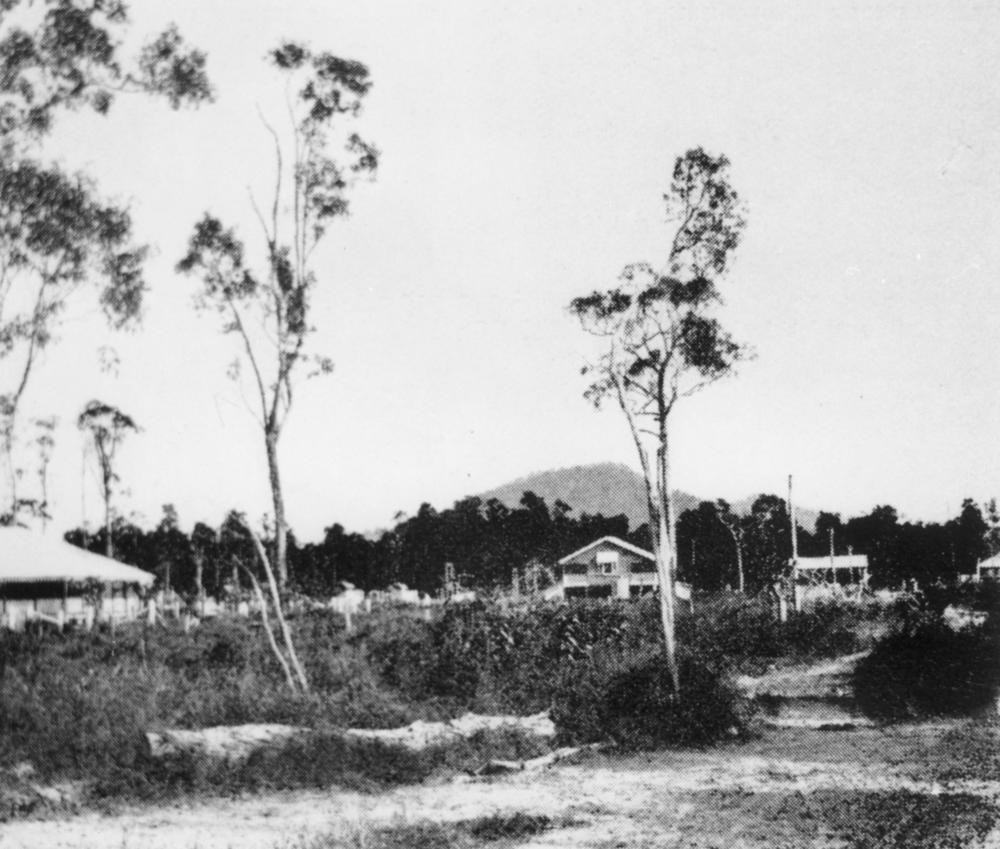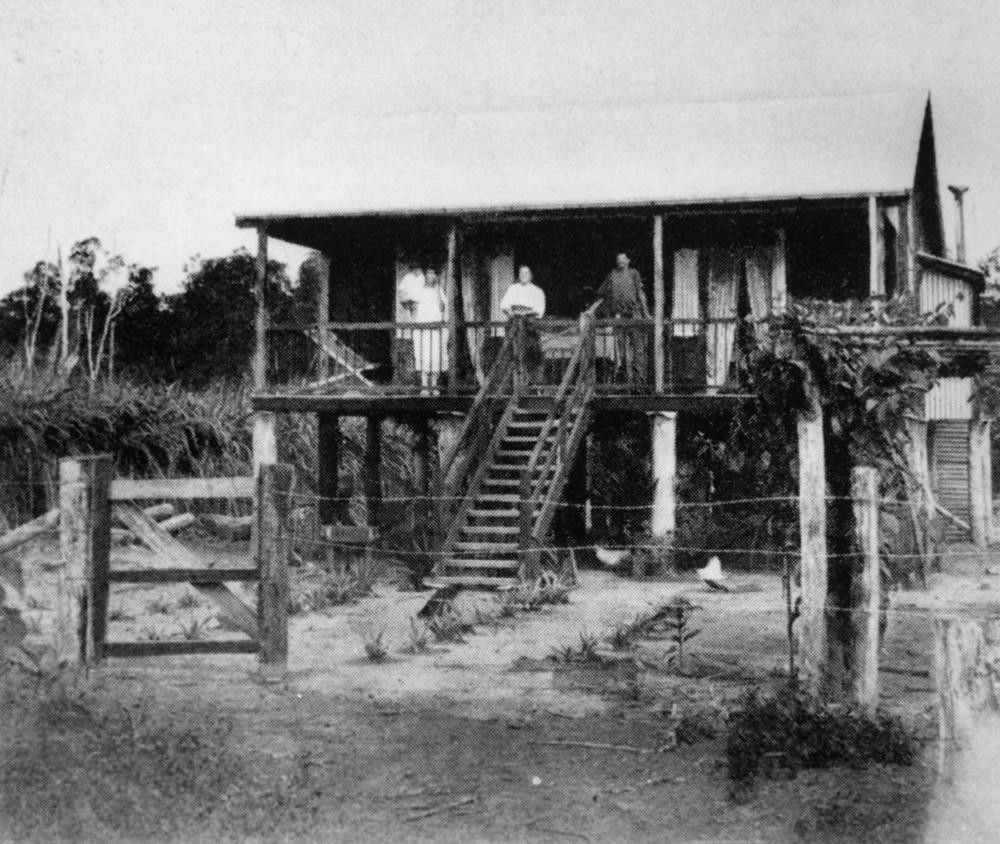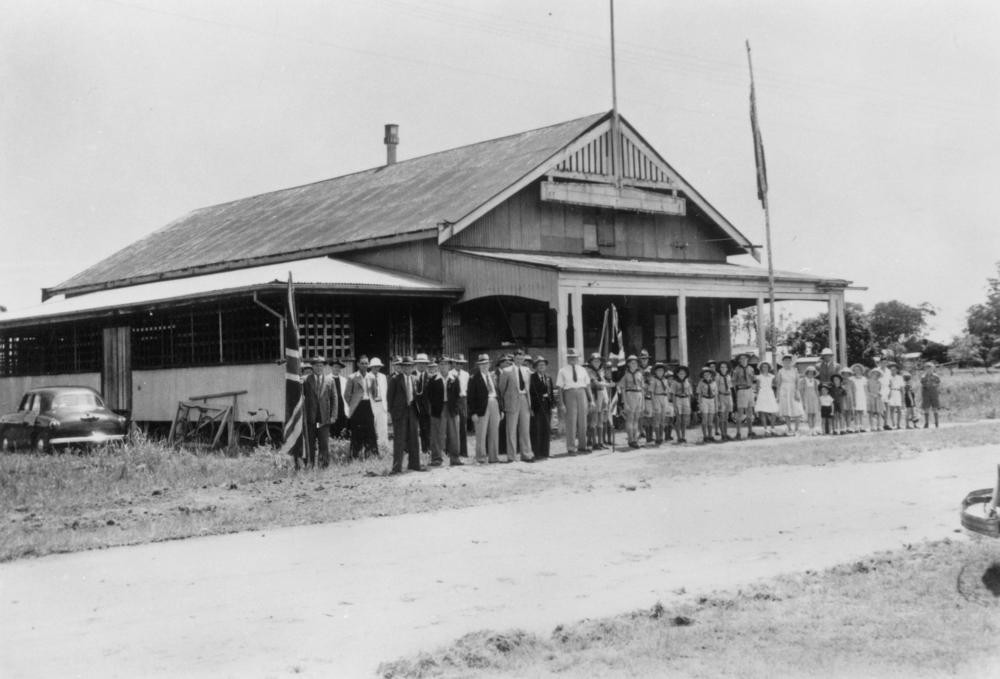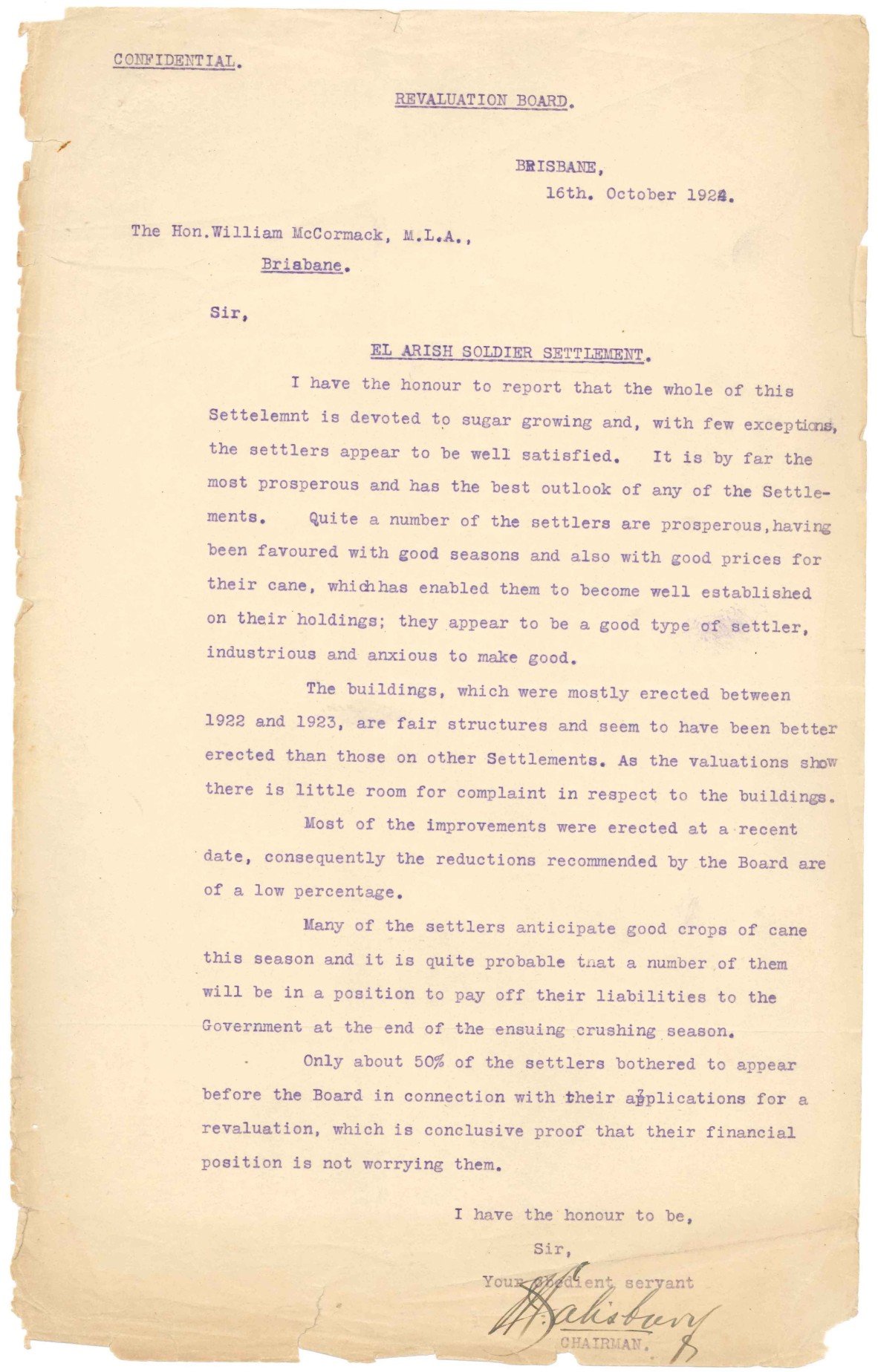Guest Blogger: Marie Carman, El Arish History Station Museum
The El Arish History Station museum houses a collection of the town’s documentary history in the original railway station which operates under the auspices of the El Arish Community Sports and Recreational Association Inc.
El Arish the town was originally established as a soldier settlement town following WWI. Six of the streets were named for WWI Generals - Monash, Chauvel, Royston, Ryrie, Wilson and Glasgow and the seventh after Francis Paxton Martin, who was the supervisor of the Maria Creek Soldier's settlement.

The above photo is four buildings in Chauvel Street, El Arish, and is taken near where the History Station museum stands today. This same image was used in the June or July 1923 edition of the Australian Sugar Journal.
The buildings from L to R :
- The private home of Mr. Frances Paxton Martin, Supervisor of the Settlement, who had been in Egypt with the 6th Light Horse under General Sir Harry Chauvel and arrived in El Arish, Queensland circa 1919. Mr Martin was instrumental in setting up almost everything. The museum has a copy of his journal which lists in detail the allotments, the soldiers who were settled there and the jobs they each did in the town between 1921 and 1925, giving us a wonderful insight into the town's early history. We purchased a digitised copy of the journal from the Queensland State Archives who very generously copied the three hundred odd page document for us. The Museum is in touch with the Martin family who hope to visit El Arish for ANZAC Day next year.
- The El Arish State School facing west. This is not our current school as it was rebuilt facing the north in the thirties.
- Frank Martin's original office, which later became the El Arish Post Office and then a private home until its destruction by Cyclone Yasi in 2011. I can imagine Frank Martin walking down to work in the mornings past the school.
- The corner of the Railway Station master's residence is just showing. It is still there today, and beautifully maintained by its private owners since the cyclone.

The photo of the cottage above with the people on the front verandah shows an original settlers cottage built on high stumps because of its close proximity to Maria Creek. This house belonged to Martin Lyons Kearney (Leo), a returned soldier who served in France. There was no bridge over Maria Creek early on, and Leo had a flying fox system set up in order to cross it. You can just see a water tank and a stove attached which is an indicator it was the home of a married soldier. The unmarried ones made do until they needed to get these things.

The photo of the Anzac Day march is indeed the mid-fifties. It is taken at the El Arish RSL Memorial Hall on Royston Street. The museum also holds a photo of the Returned Soldiers present on the day. I can provide the names of everyone present for anyone interested.
Each year on Anzac Day, museum members mount a display which is visited by hundreds of people. Plans are now underway to commemorate every soldier associated with El Arish in 2015.
Marie Carman, El Arish
P.S. Queensland State Archives has files on the Soldier settlement areas of Queensland. The following letter is an example of the correspondence contained in the El Arish file. The revaluation Board report is part of Item 1042859, dated 16 October 1924.

Comments
Your email address will not be published.
We welcome relevant, respectful comments.